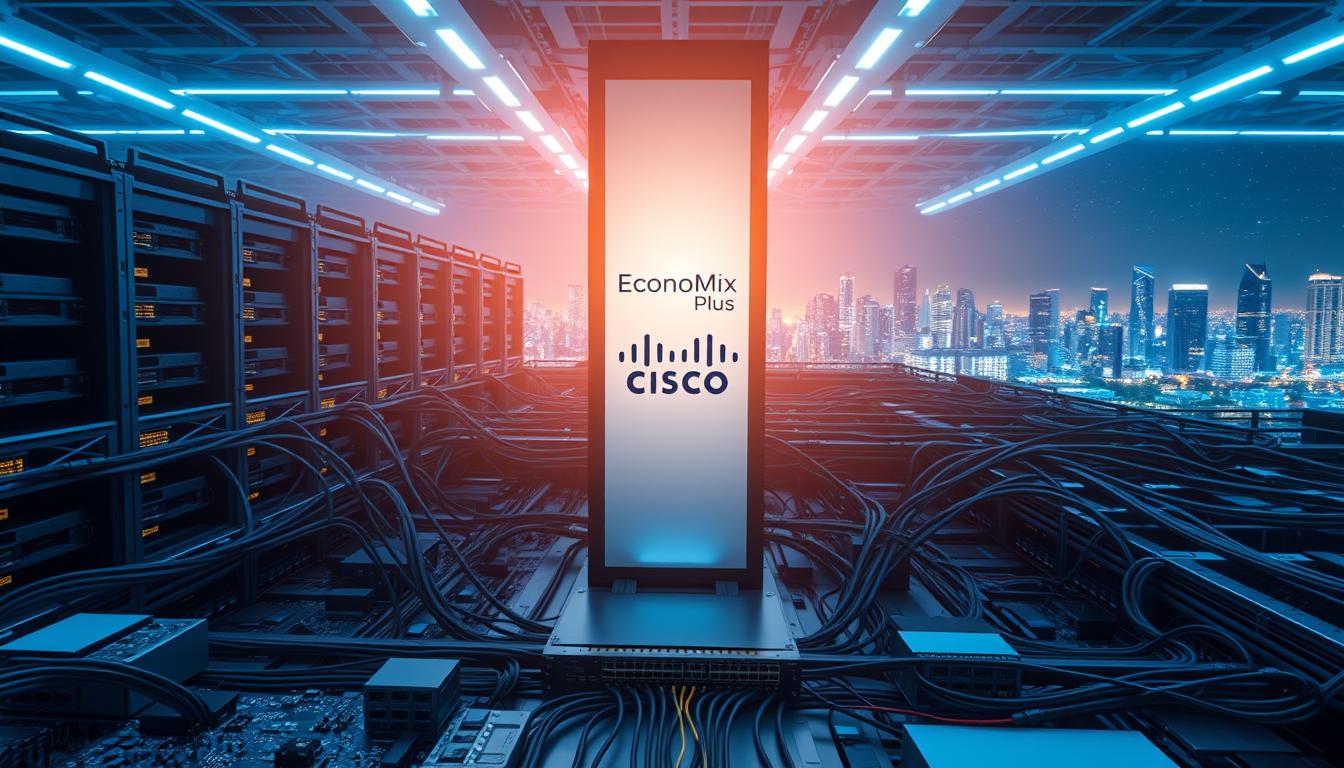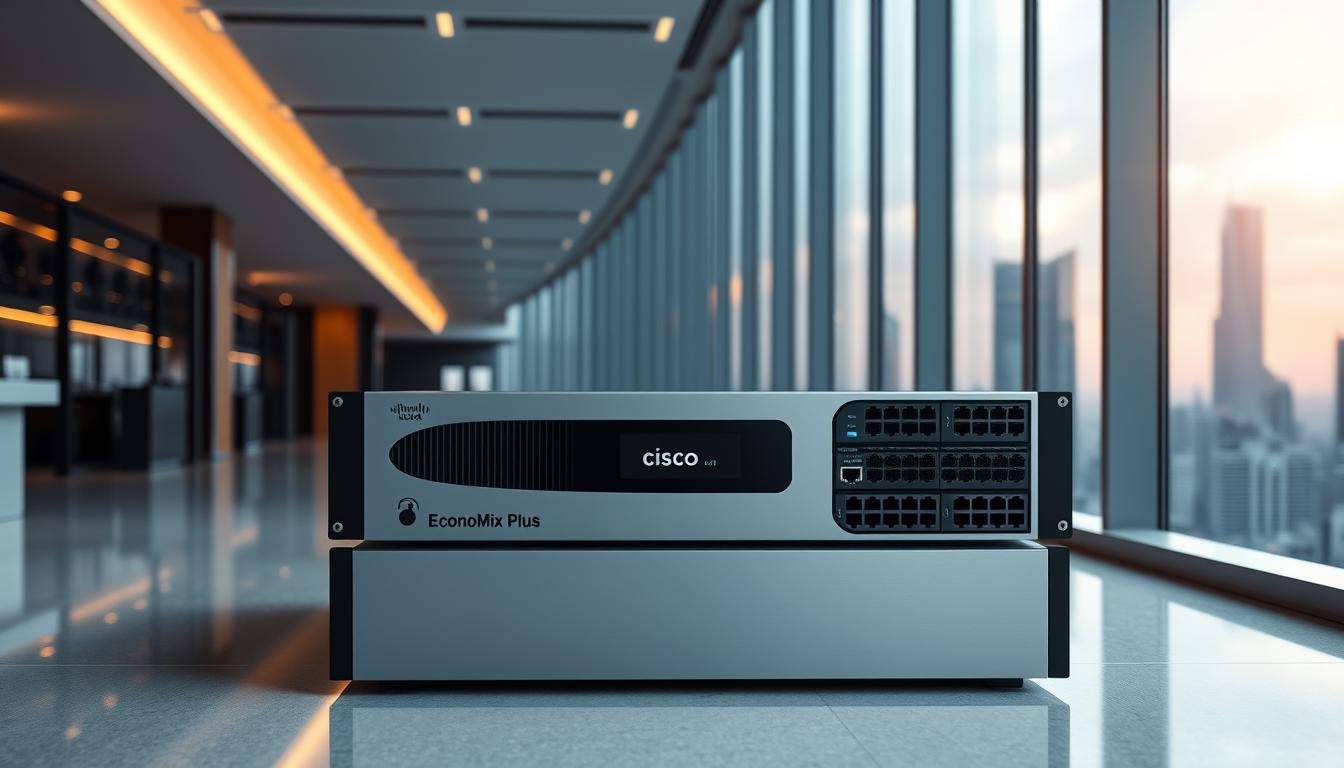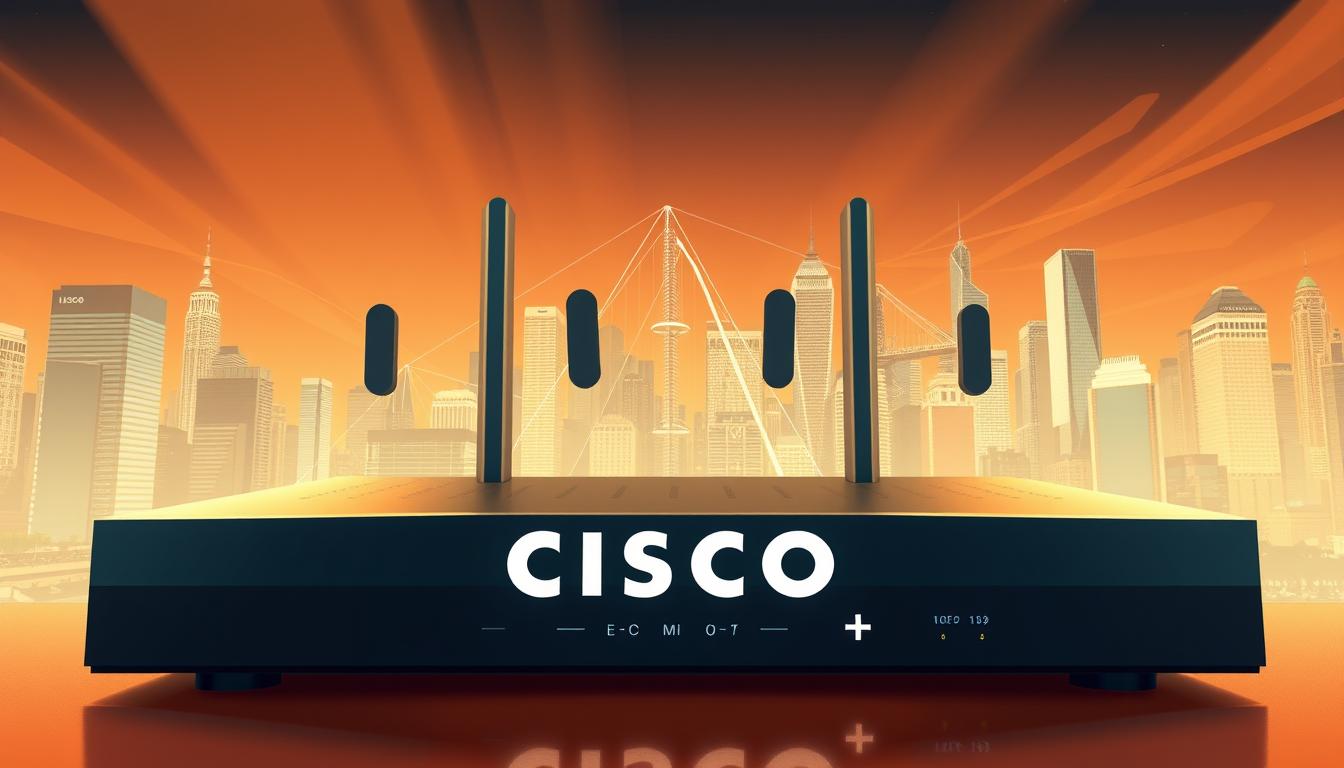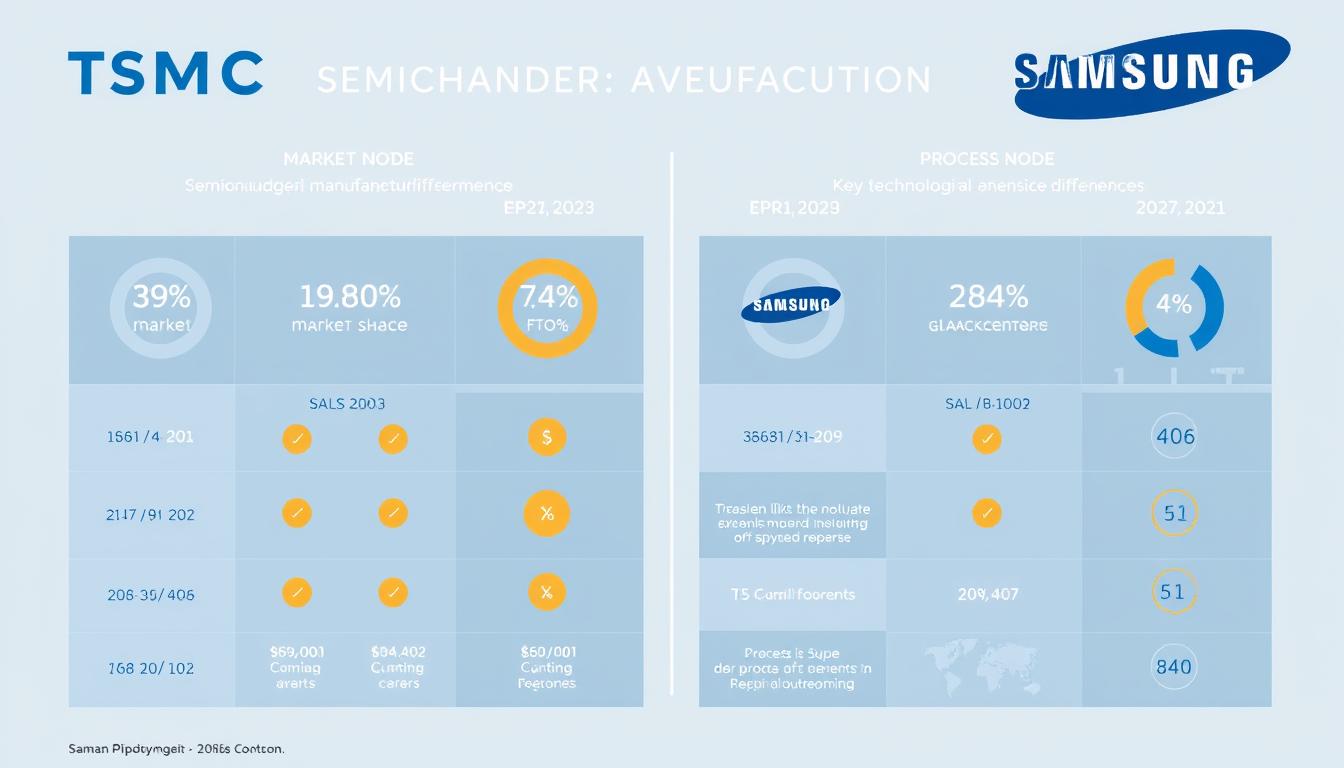Can a company maintain its leadership in the ever-evolving networking technology landscape? Cisco Systems, Inc., a global leader in networking solutions, has been at the forefront of shaping the Internet and modern communication.
Cisco has transformed the way the world connects, communicates, and collaborates, laying the groundwork for much of the infrastructure that powers today’s digital age. With a history of innovation, Cisco has consistently introduced solutions that have reshaped industries and enhanced global connectivity for businesses and enterprises alike.
The company’s ability to adapt to changing technology landscapes has enabled it to maintain its market leadership despite significant industry disruptions and intense competition.
Key Takeaways
- Cisco’s dominance is driven by its strategic innovation and comprehensive product offerings.
- The company’s adaptive business models respond to changing technological landscapes.
- Cisco’s network solutions have reshaped industries and enhanced global connectivity.
- The company’s focus on R&D has enabled it to stay ahead of the competition.
- Cisco’s leadership in networking technology has transformed the way the world connects and communicates.
The Genesis of a Networking Giant
Cisco’s story started with a challenge: to bridge the gap between disconnected computer networks. In 1984, Leonard Bosack and Sandy Lerner, two employees at Stanford University, founded Cisco Systems. Their experience in Stanford’s computer science department had shown them the need for a device that could enable disparate networks to communicate seamlessly.
Stanford Origins: How Bosack and Lerner Changed Connectivity
Bosack and Lerner’s work at Stanford University’s computer science department positioned them uniquely to address the challenge of network connectivity. They saw firsthand the limitations of existing networking technology and were driven to innovate. Their solution would go on to revolutionize the way different computer systems communicate.
The Multi-Protocol Router: Cisco’s Breakthrough Innovation
The breakthrough came with the development of the multi-protocol router, a device that could connect diverse networks and enable seamless communication between them in various environments. This innovation was crucial for building the modern Internet, allowing businesses, universities, and enterprises to link their networks, thereby creating a new era of interconnected communication that supports data transfer across data centers and between routers and switches. Over the years, this advancement has transformed how data is shared and utilized, making it essential for organizations today.
Early Challenges and Determination
Despite the groundbreaking nature of their innovation, Cisco Systems faced significant early challenges, including limited resources and market skepticism. However, Bosack and Lerner’s determination and belief in their vision kept them pushing forward. They overcame initial obstacles, setting the foundation for what would become the world’s leading networking company.
The journey of Cisco Systems from a small startup to a global giant was marked by innovation and a relentless drive to solve networking problems. Their story is a testament to the power of vision and perseverance in the face of adversity.
- The founders’ academic background and practical experience at Stanford’s computer science department.
- The technical innovation of Cisco’s multi-protocol router.
- The early business challenges faced by the founders.
Strategic Evolution: From Hardware Provider to Technology Ecosystem
Cisco’s transformation into a technology ecosystem leader was fueled by its successful IPO and strategic acquisitions in the 1990s. This period marked a significant turning point in the company’s history as it transitioned from a specialized hardware manufacturer to a comprehensive technology solutions provider.
The 1990s Expansion and IPO Success
In 1990, Cisco made a bold move by going public with its Initial Public Offering (IPO), priced at $18 per share. The overwhelming demand for shares caused the price to rise quickly, reflecting growing confidence in the company’s prospects. This successful IPO provided the capital foundation for Cisco’s rapid expansion.
Acquisition Strategy: Building a Complete Portfolio
Cisco’s key growth strategy in the 1990s was through strategic acquisitions. By acquiring smaller networking companies, Cisco expanded its technology portfolio and solidified its position as a leader in networking. Key acquisitions, such as the 1993 purchase of Crescendo Communications, a leader in network switching, helped Cisco expand its capabilities and dominate the networking space.
- Cisco’s acquisitions brought in new expertise, allowing the company to enter new markets and integrate complementary technologies into its own.
- These strategic moves enabled Cisco to build a complete networking portfolio, offering end-to-end solutions rather than isolated products.
- The company’s gradual transition from focusing purely on hardware to developing integrated solutions that combined hardware, software, and services positioned Cisco to address more complex customer needs.
Transition from Pure Hardware to Integrated Solutions
Cisco’s shift towards integrated solutions marked a significant evolution in its strategy. By combining hardware, software, and services, Cisco was able to provide comprehensive network infrastructure that met the growing demands of its customers. This transition was a key factor in Cisco’s continued growth and its ability to maintain a leadership position in the networking market.
Through its strategic acquisitions and innovative approach to technology, Cisco successfully transformed into a comprehensive technology ecosystem provider, setting the stage for its continued success in the evolving networking landscape.
Core Technologies That Established Cisco’s Market Position
At the heart of Cisco’s success are its core technologies, including routing and switching excellence with advanced routers and switches, network security innovations, and unified communications tools. These technologies have not only driven the company’s growth over the years but have also transformed the networking landscape in various environments, enabling enterprises to manage their data effectively. Today, these innovations continue to shape the future of networking.
Routing and Switching Excellence
Cisco’s routing and switching technology has been instrumental in shaping modern networks. The company’s routers and switches have provided businesses with scalable, reliable, and high-performance devices for data management and communication. Cisco’s innovations in this area have enabled networks to become faster, more secure, and highly reliable.
The evolution of Cisco’s router technology, from the original multi-protocol routers to sophisticated devices capable of handling massive data throughput, has been remarkable. These advancements have ensured that businesses can rely on Cisco’s infrastructure for their networking needs.

Network Security Innovations
Cisco has been at the forefront of network security innovations, addressing growing cybersecurity concerns through its firewall technologies, intrusion prevention systems, and advanced threat protection solutions. These innovations have helped businesses protect their networks from evolving threats and maintain the integrity of their data.
Unified Communications and Collaboration Tools
Cisco’s development of unified communications platforms, particularly Cisco Webex, has revolutionized business collaboration. Webex has become synonymous with video conferencing and virtual collaboration, especially critical during the global shift to remote work. These tools have enabled businesses to stay connected and productive, regardless of their geographical location.
| Core Technology | Description | Impact |
|---|---|---|
| Routing and Switching | Scalable, reliable, and high-performance devices for data management and communication | Enabled fast, secure, and reliable networks |
| Network Security | Firewall technologies, intrusion prevention systems, and advanced threat protection solutions | Protected businesses from evolving cyber threats |
| Unified Communications | Platforms like Cisco Webex for video conferencing and virtual collaboration | Revolutionized business collaboration and remote work |
In conclusion, Cisco’s core technologies have worked together to create comprehensive networking solutions that address the full spectrum of enterprise connectivity needs. By combining routing and switching excellence, network security innovations, and unified communications tools, Cisco has established itself as the preferred provider for businesses requiring reliable, secure, and scalable network infrastructure.
What Drives Cisco’s Dominance in Global Networking Equipment?
The company’s leadership in the networking industry can be attributed to its comprehensive approach to providing end-to-end solutions for modern environments. This strategic focus has enabled Cisco to maintain its position as a top player in the global market, especially in data centers where enterprises rely on advanced switches and networking technologies. Over the years, this has proven essential for Cisco to thrive in the competitive landscape of today.

End-to-End Solution Integration
Cisco’s ability to deliver integrated networking solutions has been crucial in maintaining its dominance in the industry. By providing seamless interoperability across all networking components, Cisco eliminates compatibility issues and simplifies network management for its customers.
Reliability and Performance Standards
Cisco’s unwavering commitment to performance standards has made its equipment the trusted choice for mission-critical network infrastructure where downtime is not an option. The company’s focus on delivering high-quality products has earned it a reputation for reliability among enterprises and businesses.
Global Support Infrastructure
Cisco’s extensive global support infrastructure, including technical assistance centers and certified partners, provides customers with confidence that issues will be resolved quickly. This comprehensive support system is a critical factor in Cisco’s ability to maintain strong relationships with its customers.
Brand Trust and Enterprise Preference
The factors mentioned above have collectively built exceptional brand trust among enterprise customers, creating a preference for Cisco equipment that competitors struggle to overcome despite often offering lower-priced alternatives. Cisco’s reputation for delivering high-quality technology and products has made it the go-to choice for many businesses and organizations.
In conclusion, Cisco’s dominance in global networking equipment is driven by its end-to-end solution integration, commitment to reliability and performance standards, extensive global support infrastructure, and the resulting brand trust among enterprises. These factors have solidified Cisco’s position as a leader in the networking industry.
Leadership Transitions and Strategic Shifts
Leadership changes at Cisco have played a pivotal role in shaping the company’s technological innovation and market approach. The transition between CEOs has marked significant shifts in the company’s strategy, driving growth and adaptation to changing technology landscapes.
Era of Expansion Under John Chambers
John Chambers led Cisco for over twenty years, guiding the company through a period of aggressive expansion. During his tenure, Cisco grew from a $1.2 billion company to a $47 billion global technology leader. This growth was largely driven by strategic acquisitions and market development, positioning Cisco as a dominant force in network infrastructure.
Under Chambers’ leadership, Cisco became synonymous with networking technology, establishing a strong foundation for its future growth. His vision for expansion and innovation laid the groundwork for the company’s continued success.
Chuck Robbins and the Software-Focused Future
In 2015, Chuck Robbins succeeded John Chambers as Cisco’s CEO, bringing a fresh perspective to the company. Robbins spearheaded Cisco’s transformation towards software and services, emphasizing cloud, security, and automation innovation. This strategic pivot has enabled Cisco to adapt to the changing needs of businesses in a digital world.
Robbins’ leadership has been instrumental in positioning Cisco as not just a networking giant but a comprehensive enterprise technology provider. His focus on software and subscription-based services has driven the company’s continued growth and innovation.
Impact of Leadership Philosophy on Product Direction
The leadership philosophy of both Chambers and Robbins has directly influenced Cisco’s product development roadmap and market approach. Chambers’ era of expansion laid the foundation for Cisco’s broad product portfolio, while Robbins’ focus on software and cloud solutions has driven the company’s evolution towards more integrated and secure networking solutions.
| Leadership Era | Key Focus | Strategic Outcomes |
|---|---|---|
| John Chambers (1995-2015) | Expansion through acquisitions, networking technology | Cisco became a $47 billion global technology leader |
| Chuck Robbins (2015-present) | Software and services, cloud and security innovation | Positioned Cisco as a comprehensive enterprise technology provider |
Cisco’s ability to adapt to changing technology landscapes and customer needs, while maintaining continuity in its core values, has been key to its continued relevance and market dominance. The company’s strategic shifts in response to technological innovation have ensured its growth and leadership in the networking industry.

Research and Development: The Innovation Engine
Cisco’s Research and Development efforts have been instrumental in driving innovation and maintaining its competitive edge in the networking industry. The company’s commitment to R&D has enabled it to stay ahead of industry trends and adapt to evolving technologies.
Investment in Emerging Technologies
Cisco invests heavily in R&D, with annual expenditures typically amounting to billions of dollars. This significant financial commitment allows the company to explore emerging technologies before they reach mainstream adoption, ensuring that Cisco remains at the forefront of network innovation.
The company’s engineers and researchers have made significant contributions to developing new technologies, including advancements in network automation, artificial intelligence, and machine learning. These innovations have not only enhanced Cisco’s product offerings but have also driven the evolution of networking standards.
Cisco’s R&D Culture and Approach
Cisco’s R&D culture is characterized by its innovation centers, developer programs, and collaborative research initiatives with academic institutions and industry partners. This approach fosters a dynamic environment that encourages creativity and the development of groundbreaking technologies.
- Cisco’s innovation centers provide a platform for brainstorming and experimenting with new ideas.
- Developer programs enable the creation of customized solutions and integrations with other technologies.
- Collaborative research initiatives facilitate the exchange of knowledge and expertise between Cisco and its partners.
Patents and Intellectual Property Advantage
Cisco’s commitment to R&D is reflected in its impressive intellectual property portfolio, which comprises thousands of patents. These patents protect Cisco’s innovations and provide a competitive advantage in the marketplace, enabling the company to maintain its leadership in networking technology.
The combination of significant investment in R&D, a culture that fosters innovation, and a robust intellectual property portfolio has positioned Cisco as a leader in the networking industry. By continuously developing new technologies and enhancing its product offerings, Cisco is well-equipped to address the evolving needs of its customers and stay ahead of industry trends.
The Subscription Revolution: Cisco’s Business Model Transformation
Cisco’s strategic pivot to a subscription-based model reflects the evolving needs of businesses in a cloud-first world. This transformation marks a significant shift from traditional one-time hardware sales to a recurring revenue approach.
From One-Time Sales to Recurring Revenue
Cisco has prioritized recurring revenue through software and subscription-based services. The move to a subscription-based model has enabled businesses to seek predictable and scalable solutions. Cisco’s subscription offerings, including cloud-based services like Cisco Umbrella (cloud security) and Cisco Meraki (cloud-managed IT), have provided businesses with the flexibility and efficiency required in today’s technology landscape.
Software and Services Focus
The company’s development of software and services offerings has complemented its hardware products, creating integrated solutions that deliver greater value. This shift has generated predictable revenue streams for Cisco, enhancing its financial stability.
Customer Lifetime Value Strategy
Cisco’s adoption of a subscription-based model has improved its customer lifetime value strategy. By providing ongoing solutions and services, Cisco has created deeper, more enduring relationships with its customers, driving long-term growth in the networking industry.
In conclusion, Cisco’s business model transformation has positioned the company for success in a rapidly evolving technology landscape, driven by cloud adoption and the need for scalable solutions.
Competitive Landscape: How Cisco Outmaneuvers Rivals
With numerous companies vying for market share, Cisco’s position in the networking technology space is subject to constant scrutiny. The networking equipment industry is highly competitive, with various companies constantly challenging Cisco’s market dominance.
Cisco faces significant competition from rivals such as Juniper Networks, Huawei, and Arista Networks. Each of these competitors has challenged Cisco in different ways, pushing the company to innovate and adapt.
Cisco vs. Juniper: Different Philosophies
Juniper Networks has consistently been a strong contender in the high-performance networking space, particularly in the service provider market. While Juniper focuses on specialized, high-performance products, Cisco has adopted a more comprehensive ecosystem approach, offering a broad range of network solutions. This difference in philosophy appeals to different market segments, with Juniper targeting customers seeking high-performance products and Cisco catering to those looking for integrated solutions.
The Huawei Challenge
Huawei has posed a significant challenge to Cisco, especially in emerging markets, with its aggressive pricing strategies and growing technological capabilities. To counter this, Cisco has focused on its brand reputation for reliability and customer support, as well as expanding its enterprise solutions to meet the evolving needs of its customers.
Maintaining Edge Against Specialized Competitors
Cisco maintains its competitive edge against specialized competitors like Arista Networks in the data center space through both innovation and strategic acquisitions. By continuously investing in new technology and enhancing its product portfolio, Cisco stays ahead in the rapidly evolving network landscape.
In conclusion, Cisco’s ability to outmaneuver its rivals stems from its comprehensive ecosystem approach, commitment to innovation, and strong brand reputation. As the networking industry continues to evolve, Cisco remains well-positioned to maintain its market dominance in the world of network technology.
Adapting to Technological Shifts
As the networking landscape continues to evolve, Cisco has demonstrated its capacity to innovate and adapt. The company’s ability to respond to major technological shifts has been crucial in maintaining its market leadership.
Cloud Computing Response
Cisco has successfully adapted to the cloud computing revolution by developing cloud-native solutions and hybrid cloud connectivity options. This strategic move has enabled Cisco to remain relevant in increasingly cloud-centric enterprise environments. By integrating its networking expertise with cloud technologies, Cisco provides businesses with the flexibility and scalability they need to thrive in a digital world.
Software-Defined Networking (SDN) Strategy
Cisco’s software-defined networking (SDN) strategy has transformed traditional hardware-centric networking into programmable, software-controlled environments. Solutions like Cisco ACI (Application Centric Infrastructure) and Cisco DNA Center allow companies to manage their network infrastructure more efficiently, improving automation, scalability, and security.
“The future of networking is software-defined, and Cisco is at the forefront of this transformation.”
5G and Edge Computing Positioning
Cisco is also positioning itself for the future with 5G and edge computing technologies. By developing 5G-compatible network solutions, Cisco is supporting the next generation of mobile connectivity. Additionally, Cisco’s edge computing solutions extend network intelligence to the edge, enabling businesses to process data closer to where it’s generated, reducing latency, and improving real-time decision-making.
| Technological Shift | Cisco’s Response | Benefits |
|---|---|---|
| Cloud Computing | Cloud-native solutions and hybrid cloud connectivity | Flexibility, scalability |
| Software-Defined Networking | Cisco ACI and DNA Center | Improved automation, scalability, security |
| 5G and Edge Computing | 5G-compatible network solutions and edge computing | Reduced latency, improved real-time decision-making |
Cisco’s AI and Machine Learning Integration
Cisco is at the forefront of leveraging AI and machine learning to enhance network automation and security. The integration of these emerging technologies into Cisco’s product portfolio represents a significant evolution in networking technology.
Network Automation and Intelligence
Cisco has implemented network automation and intelligence through platforms like Cisco DNA Center, which utilizes AI to simplify network operations, reduce manual configuration, and enable intent-based networking. This approach allows for more efficient and adaptive network management.
Predictive Analytics for Network Management
Cisco’s use of predictive analytics in network management is exemplified through platforms like ThousandEyes and Tetration. These platforms leverage machine learning to identify potential issues before they impact performance, enhancing the overall reliability of the network.
| Platform | Functionality | Benefit |
|---|---|---|
| Cisco DNA Center | AI-driven network automation | Simplified network operations |
| ThousandEyes | Predictive analytics | Proactive issue detection |
| Tetration | AI-driven analytics | Enhanced network visibility |
AI-Driven Security Solutions
Cisco’s AI-driven security solutions, including SecureX and the recently acquired Splunk platform, utilize machine learning algorithms to detect anomalies, identify threats, and automate response actions. This enhances the overall security posture of the network.
“The integration of AI and machine learning into our products is a game-changer for network security and management.”
The incorporation of AI and machine learning into Cisco’s products is transforming networking from reactive management to proactive intelligence, creating self-optimizing networks that represent the next frontier in enterprise infrastructure.
Global Market Penetration Strategy
Cisco’s approach to global expansion has involved building strong relationships with both enterprise customers and service providers. This two-pronged strategy allows the company to address the needs of both end-users and infrastructure operators, creating a comprehensive market strategy.
Building Strong Relationships
Cisco focuses on establishing and maintaining relationships with enterprise customers and service providers. By doing so, the company ensures that its networking solutions meet the evolving needs of businesses worldwide. This approach has enabled Cisco to become a trusted provider of network infrastructure.
| Region | Key Customers | Regional Adaptation |
|---|---|---|
| Europe | Telecom providers, Enterprises | Localized products and services |
| Asia | Governments, Large enterprises | Customized solutions for regional demands |
| Latin America | Service providers, SMEs | Adaptation to local regulatory requirements |
Regional Adaptation Approaches
Cisco tailors its products, services, and go-to-market strategies to address the specific needs and regulatory requirements of different geographic markets. This regional adaptation approach ensures that Cisco’s solutions are relevant and valuable to businesses and governments worldwide.
Partner Ecosystem Development
Cisco has developed an extensive partner ecosystem that includes channel partners, technology partnerships, and system integrator relationships. This ecosystem extends Cisco’s reach and capabilities, enabling the company to provide comprehensive solutions to its customers. By working with partners, Cisco can address the complex needs of modern businesses.
Cisco’s comprehensive global market strategy has enabled the company to establish dominant positions in markets worldwide. With a presence in nearly every country and a diverse customer base, Cisco continues to drive innovation in the networking industry.
Challenges and Controversies in Cisco’s Journey
As Cisco expanded its reach and influence, it encountered various challenges that impacted its business practices. The company’s growth into a networking giant was accompanied by scrutiny over its market dominance and competitive practices.
Antitrust Issues and Market Dominance
Cisco has faced antitrust lawsuits and regulatory scrutiny related to its market practices. Lawsuits have accused the company of leveraging its dominance to stifle competitors in the router and switch markets. While Cisco has denied engaging in anti-competitive behavior, these concerns have highlighted the delicate balance between market leadership and maintaining fair competition in the tech sector.
Security Vulnerabilities and Responses
The prevalence of cybersecurity threats has put significant pressure on Cisco to ensure the security of its products and services. Vulnerabilities in Cisco’s network devices, such as routers and switches, have been exploited by hackers and government surveillance programs, potentially compromising customer data. Cisco has had to respond swiftly to these concerns, implementing measures to address vulnerabilities and maintain customer trust.
Adapting to Disruptive Technologies
Cisco has also faced challenges in adapting to disruptive technologies like software-defined networking (SDN) and cloud computing. Initial hesitation to embrace these innovations created opportunities for more agile competitors. However, Cisco has since adapted its strategies to incorporate these technologies, ensuring it remains competitive in a rapidly evolving market.
In conclusion, Cisco’s journey has been marked by various challenges, from antitrust issues to security vulnerabilities. By navigating these challenges and adapting to changing technologies, Cisco has maintained its position as a leader in the network systems market, serving diverse businesses.
Conclusion: Cisco’s Future in an Evolving Network Landscape
As we look to the future, Cisco is well-positioned to continue its dominance in the networking world, leveraging its comprehensive product portfolio and commitment to innovation. For over four decades, Cisco Systems, Inc. has stood as a pioneer in network technology, adapting to shifting market demands and driving innovation in connectivity. The company’s success can be attributed to its strategic acquisitions, customer-centric approach, and ability to adapt to technological shifts, including the adoption of cloud computing and cloud-based services.
Cisco’s infrastructure and solutions are critical in managing and securing the vast amounts of data that flow through modern networks. As emerging trends like AI-driven automation, edge computing, and quantum networking continue to shape the industry, Cisco is investing in research initiatives and evolving its business model to stay ahead. According to Cisco’s Annual Internet Report, the company is committed to addressing the challenges of the evolving network landscape.
In conclusion, Cisco’s role in shaping the future of technology and networking remains significant. The company’s ability to innovate and adapt will be crucial in addressing security threats and other challenges in the world of networking.













